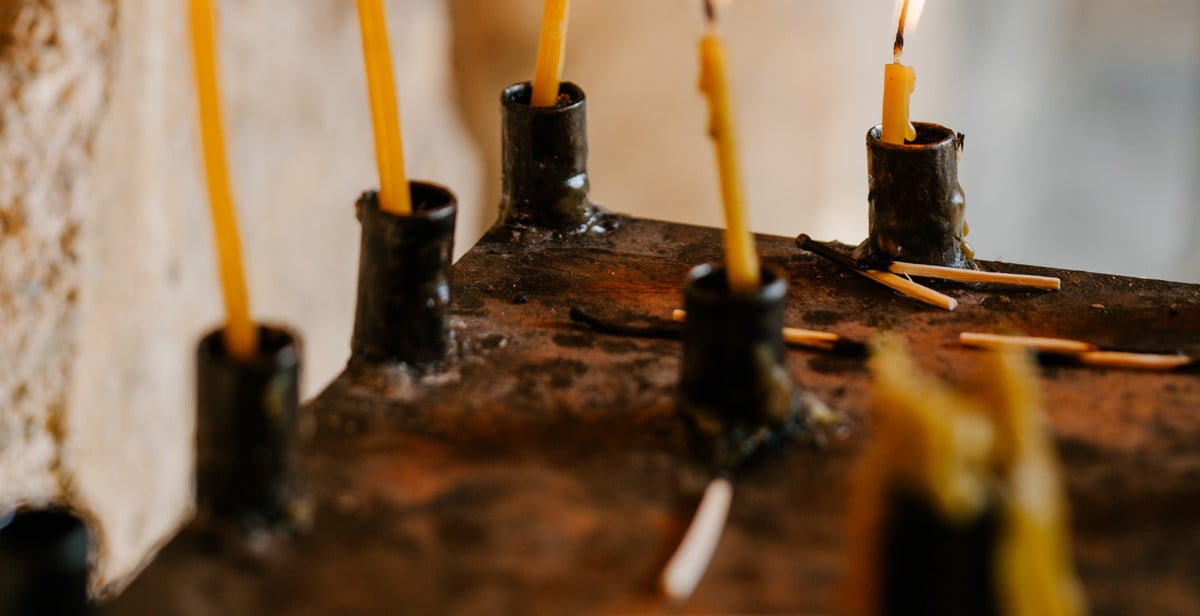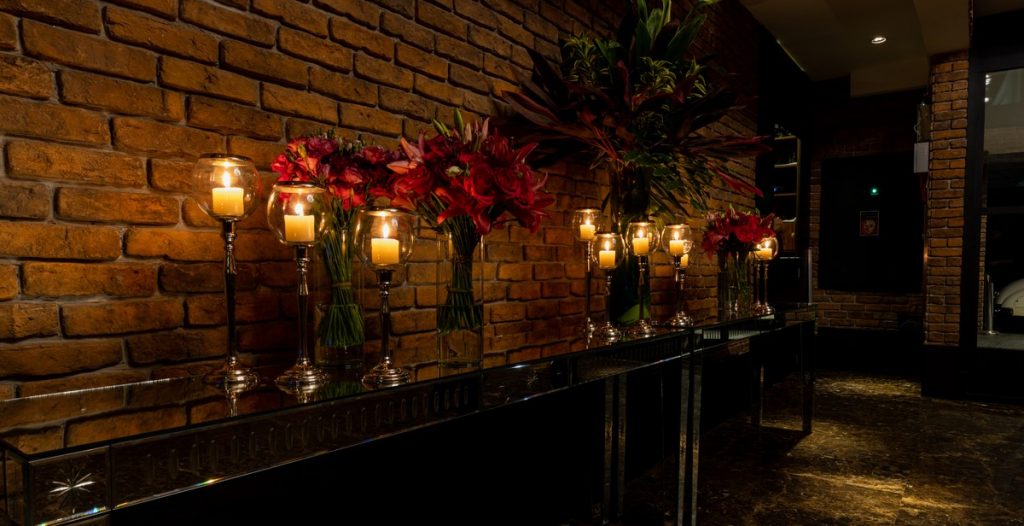The use of candles in historical illuminations and manuscript production
For centuries, candles have played a significant role in the production of illuminated manuscripts, which were handcrafted books embellished with intricate designs, illustrations, and calligraphy. These manuscripts were produced by skilled scribes and illuminators who used a variety of techniques to create beautiful and ornate pages that were both functional and decorative.
Candles were an essential tool in this process, providing the primary source of light for illuminators to work by. In the days before electric lighting, candles were the most practical and reliable way to illuminate the workspace, and they were used extensively in workshops and scriptoria throughout the medieval period.
However, candles were not just a source of light; they were also an essential component in the production of the manuscript itself. Candle wax was used as a binding agent for pigments and as a fixative for gold leaf, which was applied to the pages to create a shimmering effect.
Moreover, the use of candles had a significant impact on the production process itself. The slow-burning nature of candles meant that illuminators had to work quickly and efficiently, as the light would gradually fade over time. This pressure to work quickly and accurately led to the development of new techniques and methods, which in turn contributed to the evolution of the art form.
This article will explore the use of candles in historical illuminations and manuscript production, examining the various ways in which they were used, and the impact they had on the art form.

The History of Candles in Illumination
For centuries, candles have been used as a primary source of light in homes, religious ceremonies, and artistic illuminations. The use of candles can be traced back to ancient times when they were made from natural materials such as beeswax, tallow, and animal fat. These early candles were not only used for illumination but also for religious and cultural purposes.
Middle Ages
During the Middle Ages, candles became an essential part of manuscript production. Monks and scribes used candles to illuminate their work, allowing them to work during the night and in dimly lit spaces. The candles used during this time were made from beeswax or tallow and were often scented with herbs and flowers to mask the smell of the animal fat.
Candles were also used in religious ceremonies during the Middle Ages. Churches and cathedrals used candles to illuminate their altars, statues, and paintings, creating a mystical and spiritual atmosphere. The use of candles in religious ceremonies continued throughout the Renaissance and into modern times.
Renaissance
During the Renaissance, candles became a symbol of wealth and luxury. The wealthy used candles made from beeswax, which burned cleaner and longer than tallow candles. These candles were often scented with exotic fragrances and were used to create a romantic and elegant atmosphere in homes and at social events.
In the world of art, candles were used to illuminate paintings and sculptures, adding depth and dimension to the artwork. The use of candles in art continued throughout the Renaissance and into the Baroque period.
| Type of Candle | Time Period | Materials Used |
|---|---|---|
| Tallow Candles | Ancient Times – Middle Ages | Animal Fat |
| Beeswax Candles | Middle Ages – Renaissance | Beeswax |
In conclusion, the history of candles in illumination spans centuries and has played a significant role in religious ceremonies, manuscript production, and artistic illuminations. From tallow candles in ancient times to beeswax candles in the Middle Ages and Renaissance, candles have evolved over time and continue to be used today for their practical and aesthetic qualities.

Types of Candles Used in Illumination
Candles have been used for centuries as a source of light for various purposes, including in the production of illuminated manuscripts. Different types of candles have been used throughout history, each with its unique characteristics.
Beeswax Candles
Beeswax candles were one of the earliest types of candles used in illumination. They are made from beeswax, which is a natural wax produced by bees. Beeswax candles burn cleanly and emit a pleasant honey-like scent. They were popular among monks and other scribes who used them in the creation of illuminated manuscripts.
Tallow Candles
Tallow candles were another common type of candle used in illumination. They are made from animal fat, usually from cows or sheep. Tallow candles were cheaper to produce than beeswax candles, but they emitted an unpleasant odor when burned. Despite this, they were widely used for illumination, especially in households where beeswax candles were too expensive.
Spermaceti Candles
Spermaceti candles were a more expensive type of candle used in illumination. They are made from the oil found in the head of the sperm whale. Spermaceti candles burned brighter and longer than beeswax or tallow candles, and they emitted a pleasant odor when burned. However, the use of spermaceti candles was controversial due to the hunting of sperm whales, which were endangered.
| Candle Type | Source | Burn Time | Odor |
|---|---|---|---|
| Beeswax | Bees | Long | Pleasant |
| Tallow | Animal fat | Short | Unpleasant |
| Spermaceti | Sperm whale oil | Long | Pleasant |
Overall, the type of candle used in illumination depended on factors such as availability, cost, and personal preference. Nevertheless, each type of candle played an important role in the production of illuminated manuscripts, which remain a testament to the creativity and skill of the scribes who produced them.

Candle Making Process in Historical Manuscript Production
The use of candles in historical illuminations and manuscript production cannot be overstated. Candles were not only a source of light during the long hours of work but also played a crucial role in the preservation of the manuscripts. Here is a breakdown of the candle making process in historical manuscript production.
Preparation of Wax
The first step in candle making is the preparation of wax. Historically, beeswax was the preferred choice for candle making due to its clean burning and long-lasting qualities. The wax was melted in a double boiler or a cauldron over a fire until it became a liquid.
Wick Making
Next, the wick was made by braiding cotton or linen fibers, which were then dipped in the melted wax. The wick was left to dry before being dipped again, and this process was repeated until the desired thickness was achieved. The wick was then cut into appropriate lengths for the candles.
Candle Dipping and Molding
Once the wicks were ready, they were dipped into the melted wax, which formed a layer around the wick. The candle was then left to cool before being dipped again. This process was repeated until the desired thickness was achieved. The finished candles were then removed from the molds and trimmed to the appropriate length.
| Materials | Tools |
|---|---|
| Beeswax | Cauldron or double boiler |
| Cotton or linen fibers | Wick cutter |
| Molds | Candle snuffer |
In conclusion, the candle making process in historical manuscript production was a meticulous and labor-intensive process. Despite the advancement of modern technology, the use of candles in manuscript production remains relevant in the preservation of historical documents.

Significance of Candles in Illumination and Manuscript Production
Candles have played a significant role in the history of manuscript production and illumination. Their use extends beyond mere practicality and necessity, as they also hold symbolism and religious significance.
Symbolism and Religious Significance
Candles have been used as symbols of light and enlightenment for centuries. In religious contexts, candles represent the presence of God, the soul, and the resurrection. In manuscript production and illumination, candles were used to symbolize enlightenment and the pursuit of knowledge.
The use of candles in religious ceremonies and manuscript production also has a symbolic significance. The light from the candles represents the presence of God and the divine, illuminating the path to enlightenment and knowledge.
Practicality and Necessity
Candles were a necessary tool in manuscript production and illumination. Before the advent of electricity, candles were the primary source of light for scribes and illuminators working on manuscripts. They provided a consistent source of light that allowed for precision and accuracy in their work.
Candles were also necessary for the preservation of manuscripts. The use of candles allowed for the production of manuscripts in dark spaces, such as monasteries, which protected them from the damaging effects of sunlight and moisture.
Candles were not only practical but also necessary for the production of illuminated manuscripts. Illuminators used candles to heat their tools, such as wax and pigments, which allowed them to work more effectively. Candles were also used to soften wax seals, which were used to secure documents and manuscripts.
| Symbolism and Religious Significance | Practicality and Necessity |
|---|---|
| Candles represent the presence of God and the pursuit of knowledge | Candles were necessary for the preservation of manuscripts and allowed for the production of manuscripts in dark spaces |
| The light from candles illuminates the path to enlightenment and knowledge | Candles provided a consistent source of light that allowed for precision and accuracy in manuscript production |
| Candles were used to heat tools and soften wax seals, making them essential for the production of illuminated manuscripts |
In conclusion, the use of candles in manuscript production and illumination holds both practical and symbolic significance. Candles were necessary for the production and preservation of manuscripts, and they symbolized enlightenment and the pursuit of knowledge. Their use in religious ceremonies and manuscript production also holds religious and spiritual significance.

Conclusion
Throughout history, candles have played a significant role in illuminations and manuscript production. From the early days of civilization to the present day, candles have been used to light up the pages of books, manuscripts, and other documents. The use of candles in manuscript production was an important part of the process, as it allowed scribes to work during the night and in low light conditions, ensuring that the work was completed in a timely manner.
Although the use of candles has been replaced by electric lighting in modern times, the art of candle-making and its historical significance is still appreciated today. Candle-making has become a popular hobby, and many people enjoy creating their own candles at home. The use of candles in religious ceremonies and celebrations is also still prevalent, with many cultures using candles to symbolize hope, faith, and remembrance.
The Role of Candles in SEO
From an SEO perspective, the use of candles has a significant impact on the ranking of websites that sell candles or provide information on candle-making. By incorporating relevant keywords and phrases related to candles, such as “handmade candles,” “scented candles,” “candle-making supplies,” and “candle-making techniques,” websites can improve their search engine rankings and attract more traffic to their site.
Additionally, incorporating images and videos of candles and candle-making techniques can also improve the SEO ranking of a website. This is because search engines favor websites that have a variety of multimedia content, including images and videos, as they provide a better user experience for visitors.
Final Thoughts
The use of candles in historical illuminations and manuscript production is a fascinating topic that highlights the importance of this simple yet effective tool. Whether used for practical purposes or as a symbol of hope and faith, candles have played an important role in human history and continue to be appreciated today. By incorporating relevant keywords and multimedia content, websites can improve their SEO ranking and attract more visitors interested in this timeless craft.



